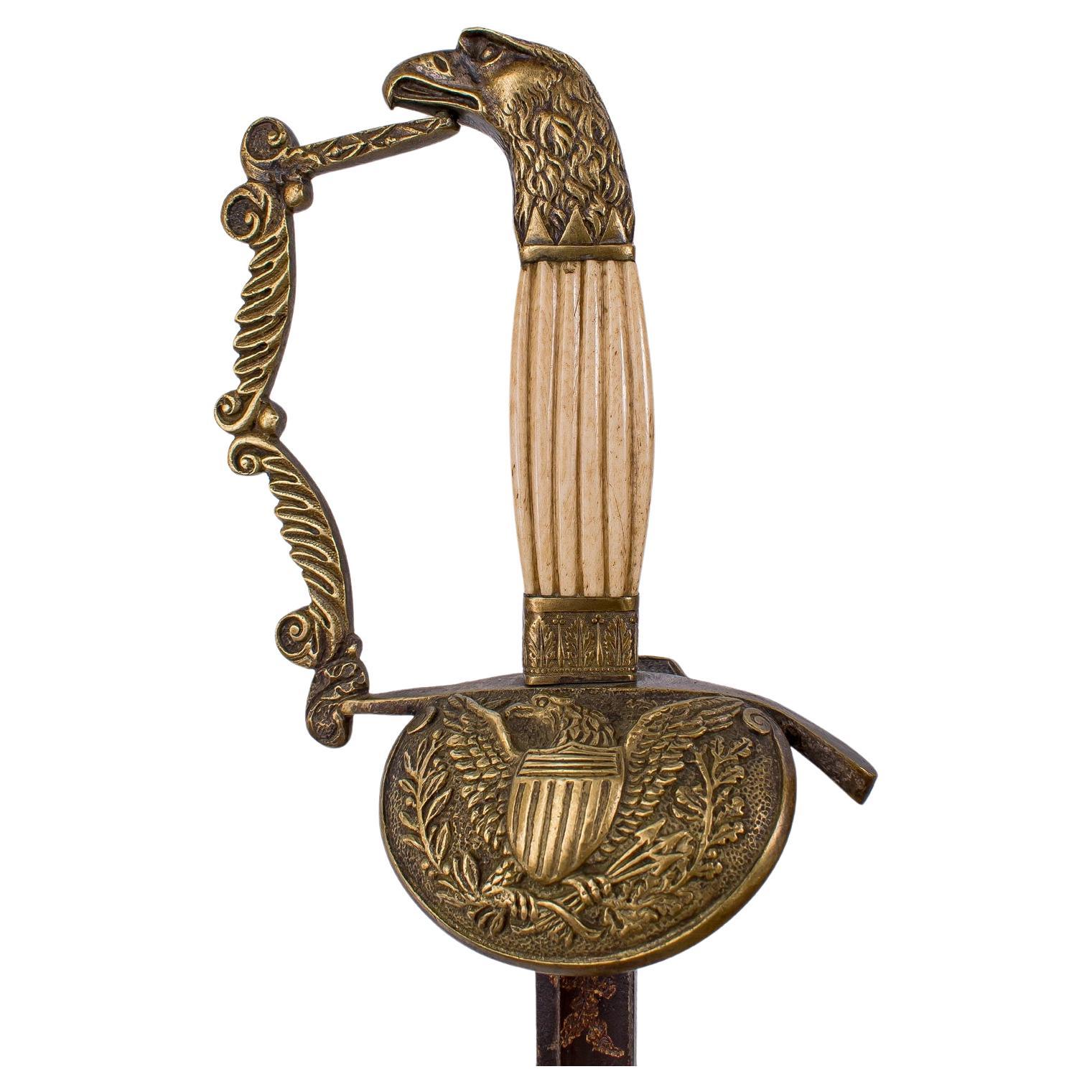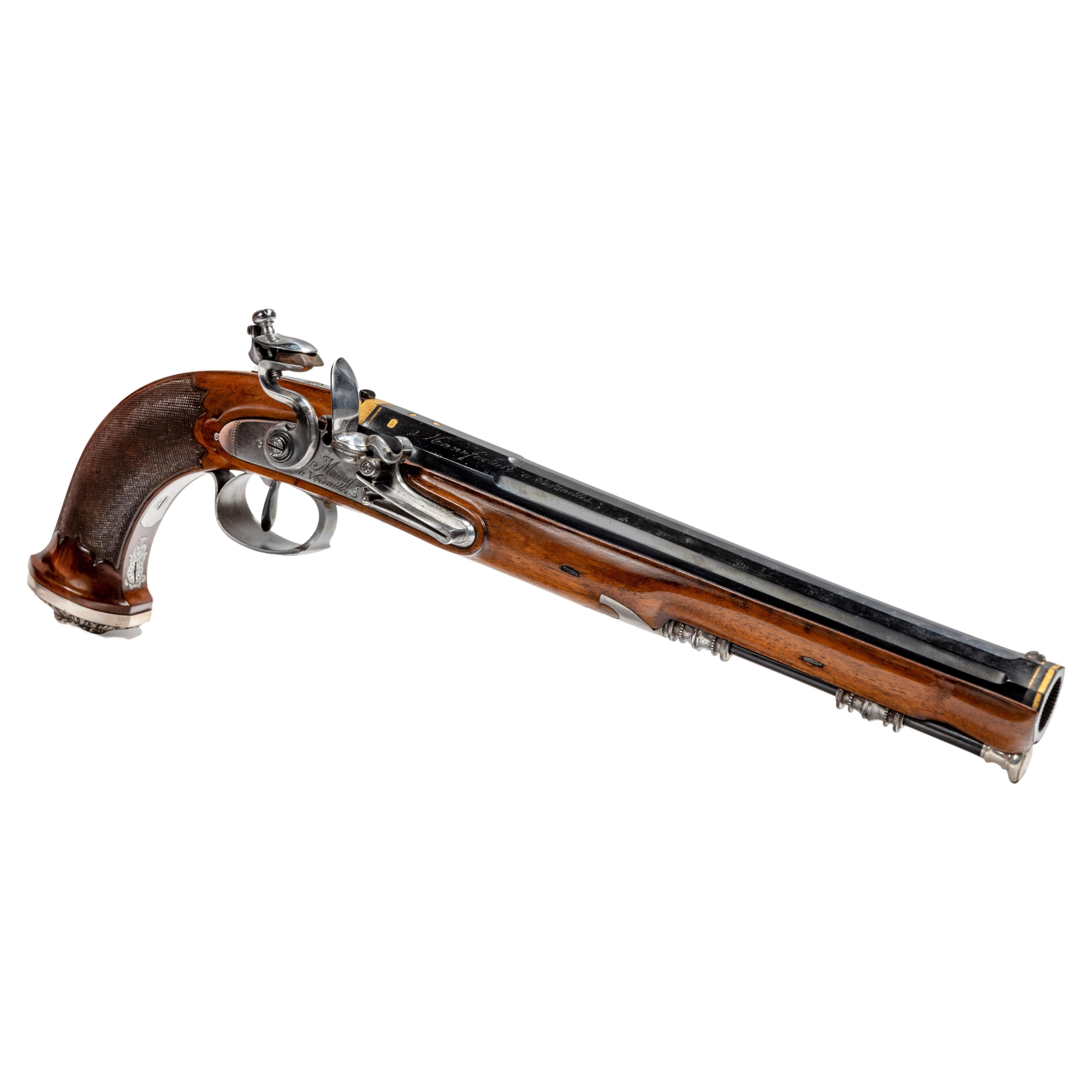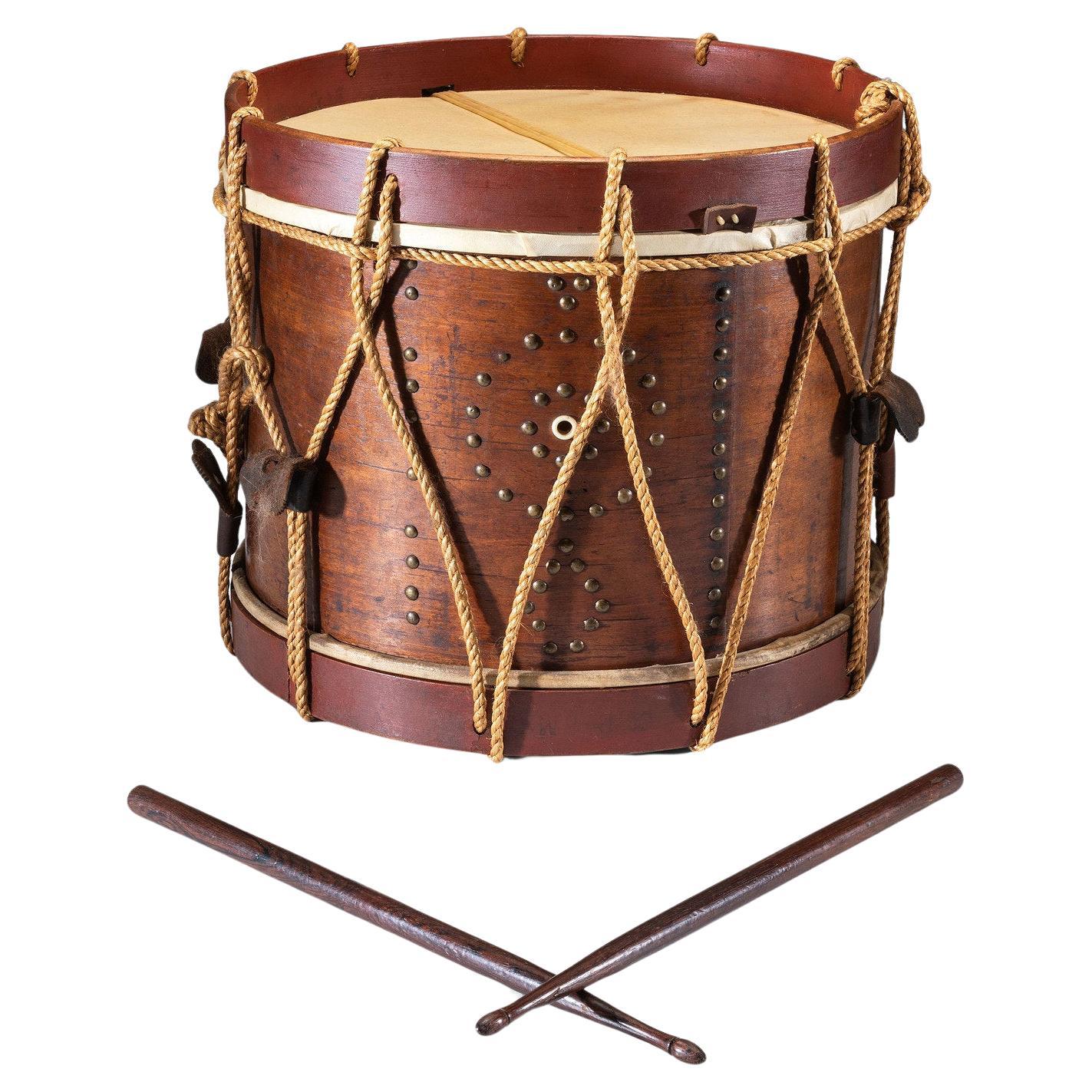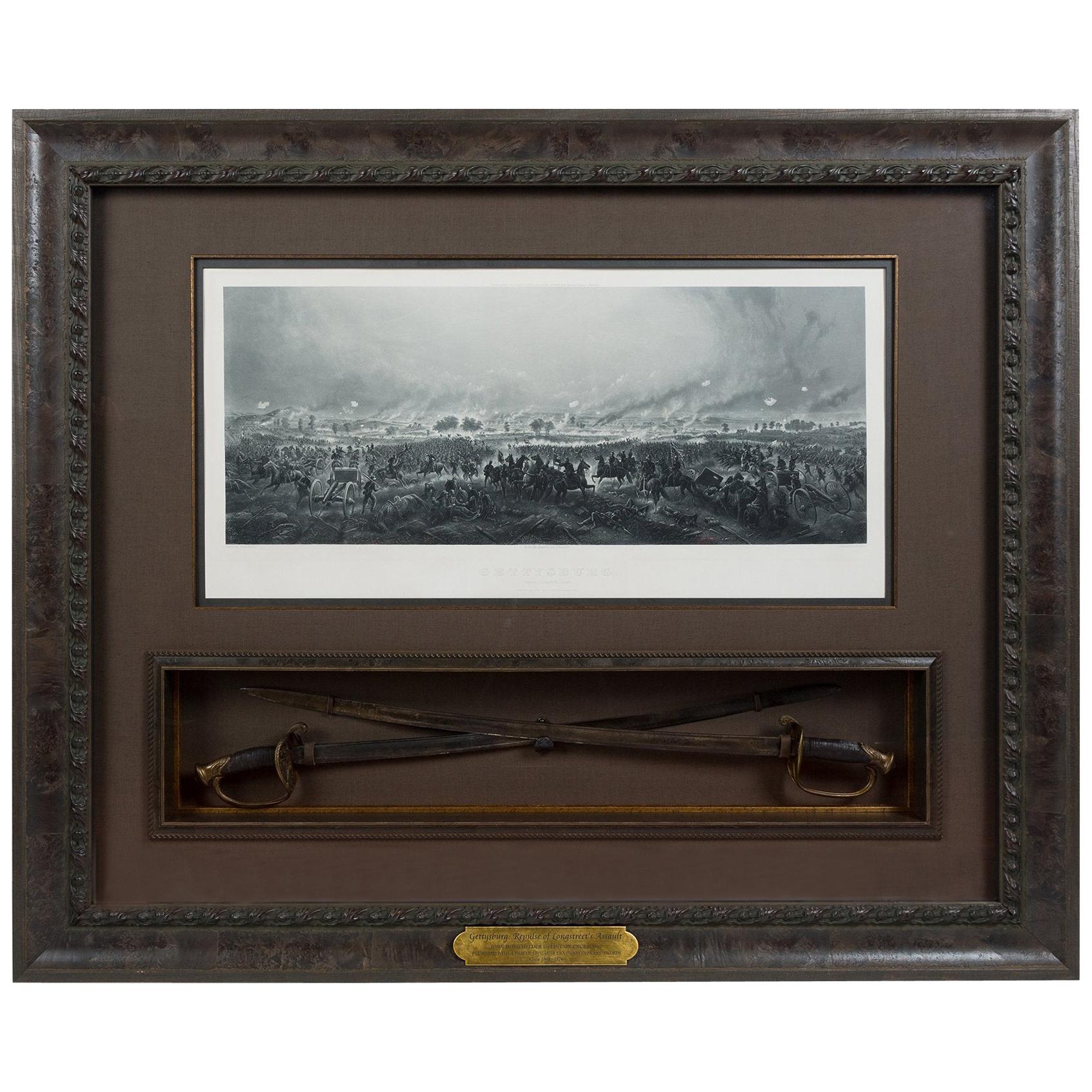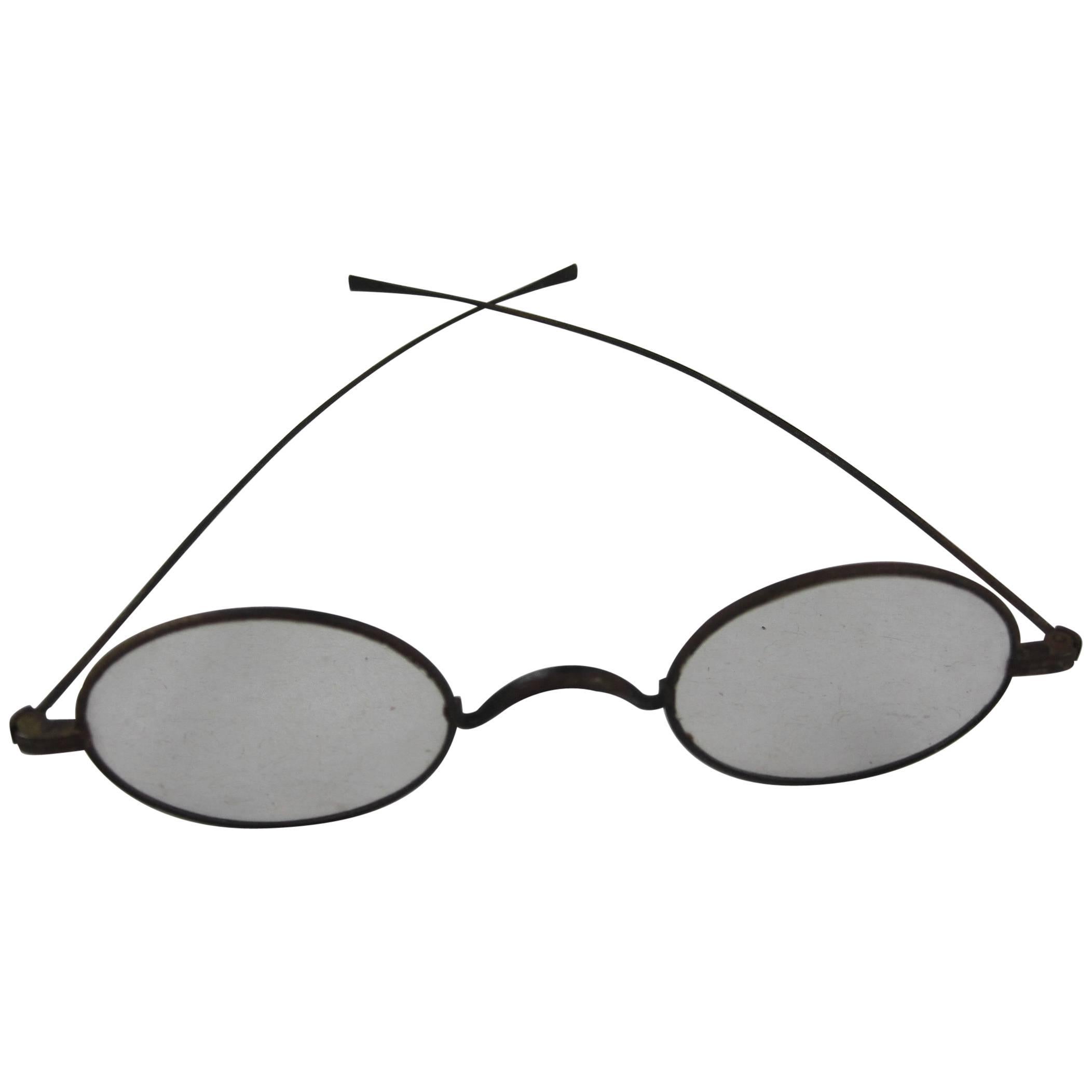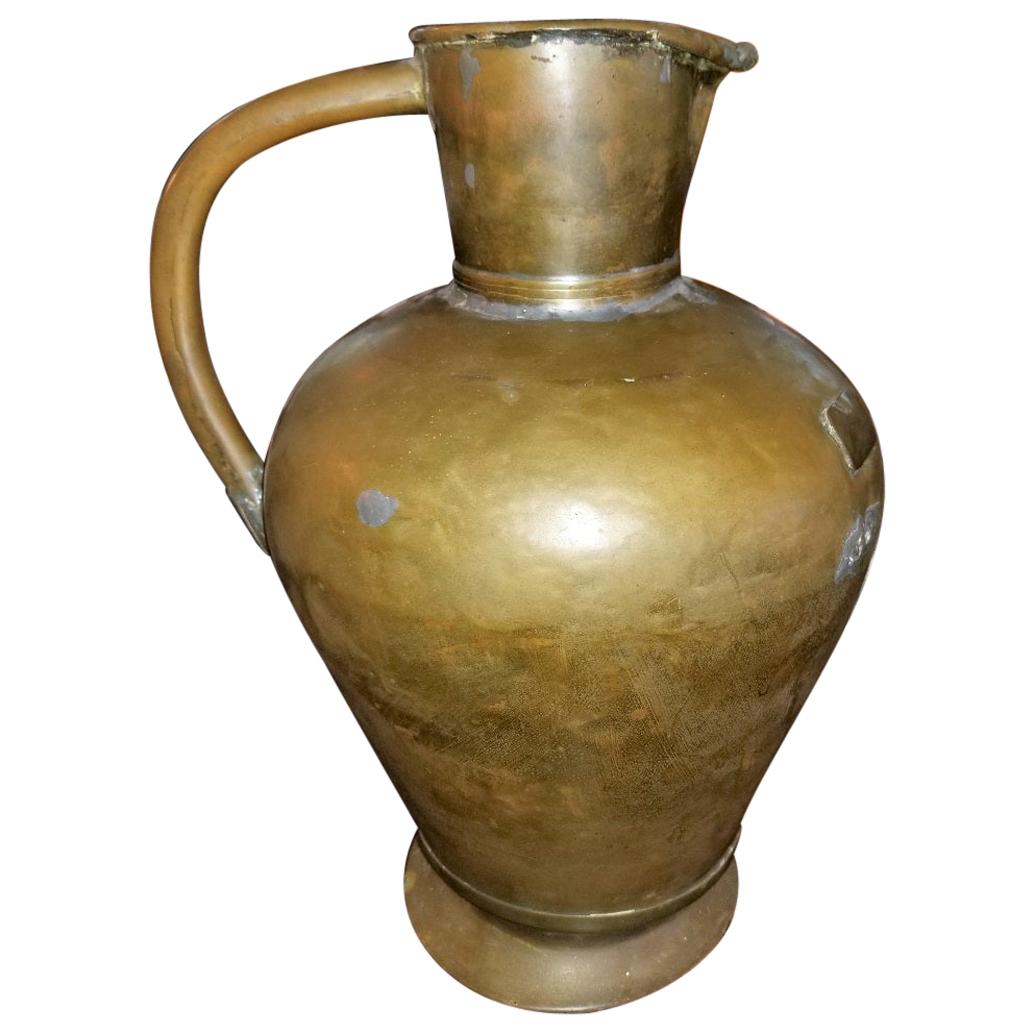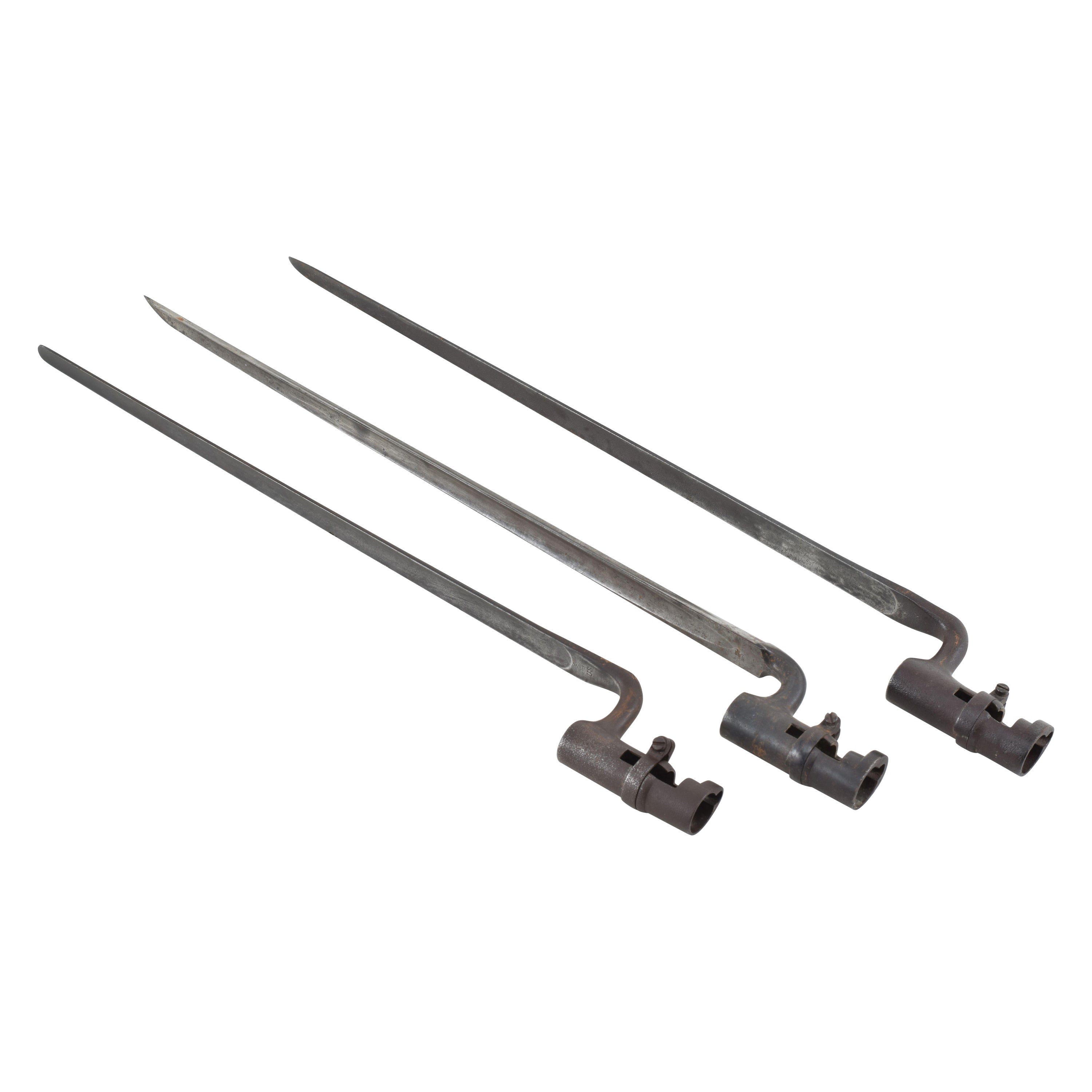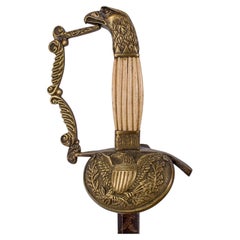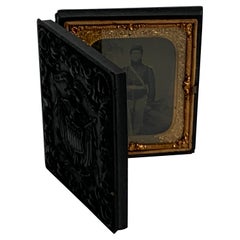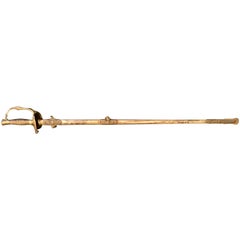
Civil War Era Union Officer's Sword
View Similar Items
1 of 5
Civil War Era Union Officer's Sword
About the Item
- Dimensions:Height: 38 in (96.52 cm)Width: 4.5 in (11.43 cm)Depth: 2 in (5.08 cm)
- Place of Origin:
- Period:
- Date of Manufacture:Unknown
- Condition:Wear consistent with age and use.
- Seller Location:Washington Crossing, PA
- Reference Number:1stDibs: LU238139887761
You May Also Like
- Rare AMERICAN OFFICER'S SWORD - pre Civil WarLocated in TEYJAT, FRThis is a very rare American Officer's sword that dates back to the period before the American Civil War. The sword has a 79cm straight blade with a flat back, counter-edged and gut...Category
Antique Early 19th Century French Arms, Armor and Weapons
MaterialsMetal
- Civil War Union Solider in Full Dress, Sword & Cannon, Union Gutta Percha CaseLocated in West Palm Beach, FLCivil War portrait, union solider in landscape in 'Union' Gutta Percha case Rare and unusual, the Ambrotype of a Union solider, in full uniform, with sword, standing next to a cannon and house. Encased in ornate Gutta Percha Case with Union Flags...Category
Antique 19th Century North American High Victorian Historical Memorabilia
MaterialsGlass
- Boutet, General Officer's GunBy H. BoutetLocated in Paris, FRNicolas Boutet (1761-1833) Pistolet d’Officer Général Platine à corps plat marquée « Manuf a Versailles », chien à corps plat à col de cygne, toutes...Category
Antique Early 19th Century French Arms, Armor and Weapons
MaterialsBronze, Stainless Steel
$49,020 - 36 Star American Flag, Civil War Era, Nevada StatehoodLocated in York County, PA36 Stars In The "Great Star" Or "Great Luminary" Pattern On A Civil War Era Flag With A Dusty Blue Canton And A Section Of One Stripe Souvenired, 1864-67, Nevada Statehood 36 star American national flag of the Civil War era, entirely hand-sewn and with some rare and beautiful features. The stars are arranged in a rendition of what is known as the Great Star or Great Luminary configuration, a large star made out of smaller stars. With no official star pattern before 1912, their design was left up to the artistic liberties of the flag-maker. Strikingly visual, the Great Star is both scarce and coveted by collectors. The 36th state, Nevada, entered the Union during the Civil War on October 31st, 1864. The last Confederate general surrendered on May 26th, 1865. The 36 star flag became official on July 4th of that year, but makers of printed flags would have begun adding a 36th star to their flags in 1864, even before the addition of the new state occurred. Lincoln pushed Nevada through just 8 days before the November election. Nevada’s wealth in silver was attractive to a nation struggling with the debts of war and increased support for the Republican ticket. The 36 star flag was replaced by the 37 star flag in 1867, with the addition of Nebraska. Adding to the flag's appeal is its small scale across those with of piece-and-sewn construction. During the 19th century, sewn flags (as opposed to those that were printed on cloth) were typically eight feet long and larger. This is because they were important in their function as signals, meaning that they needed to be seen and recognized from great distance. A flag that was six feet in length was considered small and production of flags smaller than this was extremely limited. Even infantry battle flags were approximately six by six and-one-half feet, about the size of an average quilt of the same period. As time passed, circumstances changed and sewn flags began to find more of a decorative purpose. Smaller flags are more scarce and far easier to frame and display. The Great Star configuration appears to have come about shortly after the War of 1812, when Congressman Peter Wendover of New York requested that Captain Samuel Reid, a War of 1812 naval hero, create a new design that would become the third official format of the Stars & Stripes. A recipient of the Congressional Medal of Honor, Reid became harbor master of New York following the war. During his lifetime, he created many innovations in signal use, including a system that could actually send messages from New York to New Orleans by sea in just two hours. Use as a Naval signal had been the primary reason for the initial creation of an American national flag in 1777, but since there was no official star design, the appearance of our flag varied greatly. Reid’s primary concern centered on both consistency and ease of recognition. His hope was as more and more states joined the Union and more and more stars were added to the flag, that it would remain easily identified on the open seas. In 1818, Reid suggested to Congress that the number of stripes permanently return to 13 (reduced from 15) and that the stars be grouped into the shape of one large star. Reid’s proposal would have kept the star constellation in roughly the same format, in a pattern that could be quickly identified through a spyglass as the number of states grew. His concept for the stripes was ultimately accepted, but his advice on the star pattern was rejected by President James Monroe, due to the increased cost of arranging the stars in what would become known as the “Great Star”, “Great Flower”, or “Great Luminary” pattern. Monroe probably didn’t wish to impose this cost on either the government or civilians, so he suggested a simple pattern of justified rows. Never-the-less, the Great Star was produced by anyone willing to make it and its rarity today, along with its beauty, has driven the desirability of American flags with this configuration. The canton and stripes of the flag are made of fine merino wool. Note how the canton has faded to a dusty seafoam blue, which is endearingly attractive. The stars of the flag are hand-sewn and single-appliquéd. This means that they were applied to one side of the canton, then the blue fabric was cut from behind each star, folded over, and under-hemmed, so that one star could be viewed on both sides of the flag. I always find single-appliquéd stars more interesting, not only because they are evidence of a more difficult level of seam-work and stitching, but also because they are more visually intriguing. The two visible rows of hand-stitching emphasize their hand-sewn construction, which is one reason why flags with single-appliquéd stars often appeal to connoisseurs of early American textiles...Category
Antique 1860s American Political and Patriotic Memorabilia
MaterialsWool
Price Upon Request - Vintage Civil War Era Field Glasses by Queen & Co.Located in Colorado Springs, COPresented is an original pair of Civil War-era field glasses. The glasses, an intricate example of brass and glass technology, were made in Philadelphia, Pennsylvania by the company Queen & Co. The glasses are stamped “Queen & Co., Phila” along the eyepiece. They are housed in the original leather hard case. The glasses were most likely made in the early 1860s. Binoculars were first invented in France in the 1840s. They started small, primarily as opera glasses, but by the Civil War, they were being used in battle. Larger versions, like the pair seen here, became known as field glasses. Unlike Civil War uniforms...Category
Antique 1860s American Historical Memorabilia
MaterialsBrass
- Civil War-Era Side Drum, Made by George Kilbourn, 1859Located in Colorado Springs, COPresented is an original Civil War-era side drum with a pair of wooden drumsticks. This is a rope tension drum with a wooden body, ropes, and leather tabs. An iron tack pattern surro...Category
Antique 1850s American American Classical Musical Instruments
MaterialsIron
Recently Viewed
View AllMore Ways To Browse
Antique Civil War Sword
Civil War Swords
Civil War Sword
16th Century Sword
18th Century Pistol
15th Century Sword
Antique Medieval Swords
Antique Military Weapons
Antique Cuirass
Embossed Armour
Presentation Sword
Wwii Weapons
Antique Powder Flasks
Cast Iron Cannon
Antique Powder Flask Powder Flasks
Antique Powder Flask
Antique Halberd
Signal Cannon
